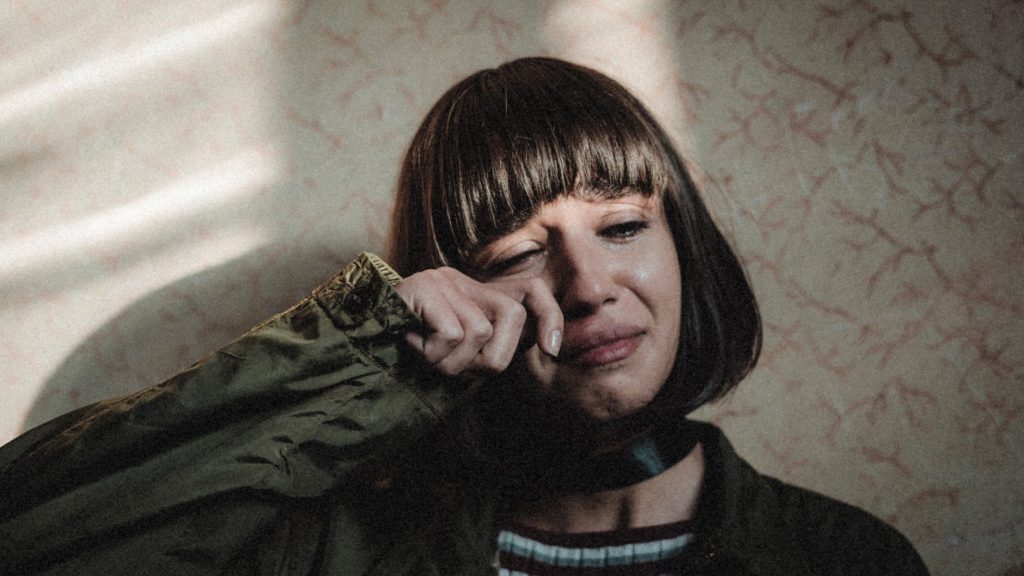What Is A Trauma Bond And Why It’s So Powerful

In the dark and twisted world of Gotham City, a toxic bond unravels. It’s when Dr. Harleen Quinzel becomes Harley Quinn and finds herself ensnared by the manipulative and abusive Joker. Even in real life, many people are falling into that same trap called trauma bond. For them, love will be painful and dangerous, until they get the strength to escape. Are you one of those people? In this article, we’ll take a look at Harley and Joker’s relationship to help you see if you’re stuck in a trauma bond.
Traumatic Roots
As a psychology intern, Dr. Harleen Quinzel treats the untreatable Joker at Arkham Asylum. From the start, he senses her vulnerability and preys on her ambition and compassion. He shares stories of his abusive childhood, intertwining humiliation with humor. He undresses himself without her consent, blurring boundaries. At that moment, he claims dominance and Harley is conquered. Instead of feeling repulsed, her brain seeks shelter. In the midst of chaos, she’s under his spell.
And this is how a trauma bond is born – out of the traumatic event. When you’ve been hurt by your partner in some way, it triggers intense emotional and physiological responses. Heightened arousal, with increased release of stress hormones, leads your brain to perceive the abuser as a source of safety. It seems paradoxical, but it’s what it needs in order to survive. And before you know it, your brain adapts to this state, forming a bond with the abuser.
Love Me, Then Hate Me
As their relationship goes on, it’s all but rainbows and sunshine. When Harley “messes up,” the Joker delivers punishment by grabbing, slapping, and throwing her. He shouts at her, declaring her a disappointment, a failure, a dolt. He isolates her from others, and makes her believe she deserves it. But the very rare displays of affection, which he barely even mumbles, get her heart racing again.
What we see here is the maintenance of a trauma bond. By using a psychological mechanism called intermittent reinforcement, your abuser alternates between periods of kindness or affection and episodes of abuse. They might insult you one day, only to bring you flowers the next, with tears in their eyes promising they’d change. That’s when you enter a cycle of hope and despair, fearing the abuse, but yearning the love that follows after.
False Beliefs And Loyalties
And just like Harley, you might not even feel abused anymore. When the Joker pushes her out the window, and her limp body hits the ground, she tells us that it’s her fault. She “should’ve got the joke”.
At this point in your trauma bond, you’ve developed cognitive distortions, which are inaccurate thinking patterns. You might rationalize or justify their behavior, blame yourself for the abuse or minimize the harm done. Once again, your brain distorts your reality, desperately trying to survive by keeping you in a fantasy world. This further solidifies the trauma bond by creating a sense of loyalty or attachment to your abuser. You see them as caring, charming, damaged. Harley explained it the best: “It soon became clear to me the Joker, so often described as a raving, homicidal madman … was actually a tortured soul crying out for love and acceptance. A lost, injured child trying to make the world laugh at his antics.” Just like Harley, you want to love your abuser. You want to care, you want to save them… but it’s you who needs to be saved.
Running Towards The Light
If you’re in a trauma bond, we know your feelings towards this person might be very strong, and you may not feel like leaving. We understand that maybe, at some point in the past, they were your bright light. But those who love you shouldn’t hurt you. They should make you feel good about yourself, not the opposite. And you don’t deserve this! Please, don’t wait until it’s too late. Call a trusted friend, a family member, your doctor or even the police if you’re in physical danger. In the description box, we linked some hotlines and resources you can visit to help you come up with an escape plan. We believe that you can find a way to snap this bond apart, and find yourself again!
Thanks for watching, and remember: you matter.
RESOURCES/HOTLINES
NATIONAL DOMESTIC VIOLENCE HOTLINE:
https://www.thehotline.org/get-help/
https://www.thehotline.org/resources/trauma-bonds-what-are-they-and-how-can-we-overcome-them/
VeryWellMind NATIONAL HELPLINE DATABASE:
https://www.verywellmind.com/national-helpline-database-4799696
References
Drea, D. (2020, February 7). What we can learn from Harley Quinn’s dark relationship with Joker. FANDOM. https://www.fandom.com/articles/harley-quinn-psychology-batman-animated-series-joker
Dutton, D. G., & Painter, S. (1993). Emotional attachments in abusive relationships: A test of traumatic bonding theory. Violence and Victims, 8(2), 105–120. https://doi.org/10.1891/0886-6708.8.2.105
Graham, D. L. R., Rawlings, E. I., Ihms, K., Latimer, D., Foliano, J., Thompson, A., Suttman, K., Farrington, M., & Hacker, R. (1995). A scale for identifying “stockholm syndrome” reactions in young dating women: Factor structure, reliability, and validity. Violence and Victims, 10(1), 3–22. https://doi.org/10.1891/0886-6708.10.1.3
Ph.D., R. F. (2017, January 18). The brain can work against abuse victims. Psychology Today. https://www.psychologytoday.com/us/blog/neurosagacity/201701/the-brain-can-work-against-abuse-victims
Writer, S. (2022, April 1). Why does Harley Quinn love the Joker? Fortress of Solitude. https://www.fortressofsolitude.co.za/why-does-harley-quinn-love-the-joker/



Responses